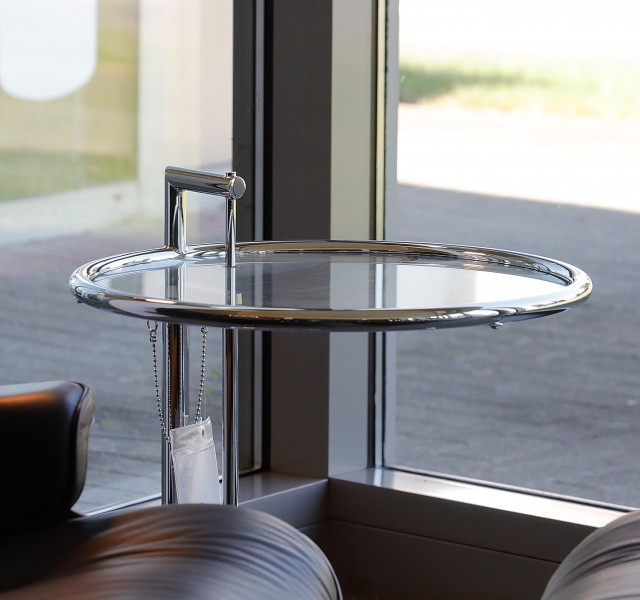Bauhaus Design from Breuer to Wagenfeld
Form follows function: As director of the Grand Ducal-Saxon Academy of Fine Arts in Weimar, Walter Gropius gave the school the name "State Bauhaus in Weimar" in 1919. He directed the Bauhaus in Weimar until 1926 and after its relocation to Dessau in Saxony-Anhalt until 1928. The move was a consequence of the change of policy in Thuringia, with a budget cut of 50 percent. By the way, the deputy director was the famous Russian painter and graphic artist Wassily Kandinsky (1866-1944), who was appointed to the Bauhaus in 1922.
Bauhaus design in the maelstrom of politics
Gropius' successor Hannes Meyer (1889-1954) was dismissed without notice by the city in 1930 because of "communist machinations". The last director of the Bauhaus was Ludwig Mies van der Rohe (1886-1969) until the National Socialists won the elections in the Dessau municipal council in 1932. Mies van der Rohe tried to continue the Bauhaus in Berlin privately, but had to close down 1933 after he came to power and emigrated to the USA. The Bauhaus was something special, because it brought together art and handicraft. The Bauhaus School developed into the most influential educational institution and avant-garde in the field of architecture, art and design in the 20th century. Its resonance continues to have an impact to the present day.
Ludwig Mies van der Rohe
Mies van der Rohe was not only director, but also architect and artist. His most famous designs include the Barcelona Lounger, the Barcelona Armchair and the Barcelona Stool, which are among the design classics of the late 1920s and 1930s (manufacturer Knoll International). These chairs got their name from the German World Exhibition Pavilion in Barcelona in 1929, where they were presented to an enthusiastic audience. The clear forms of the furniture and its material mix of tubular steel and high-quality leather create the timelessly elegant appearance that wrote design history.
Marcel Breuer
Among the famous names associated with the Bauhaus is Marcel Breuer (1902-1981), who is considered the inventor of modern tubular steel furniture. After his journeyman's examination as a carpenter in 1924 he was allowed to call himself master of form and to manage the furniture workshop. His idea to use tubular steel for the construction of furniture was revolutionary and brought the metallic look to modern times. According to an unscientific anecdote, Breuer came up with the idea of using tubular steel for furniture construction through a bicycle frame. The most famous designs by Marcel Breuer are the cantilever chairs (manufacturer Thonet, 1928-1931) with matching tables and the club chair B3, known as Wassily Chair, (manufacturer Knoll International) from 1925. The cantilever chairs were not only an aesthetic revolution - they were the first chairs to enable mobile and ergonomic sitting. Breuer fled to the USA in 1933, where he established the Faculty of Architecture at Harvard University together with Walter Gropius. Many famous public and private buildings in the USA and Europe were realised with the ideas of Marcel Breuer.
Christian Dell
Christian Dell (1893-1974) was a trained silversmith, industrial designer and master craftsman at the Weimar Bauhaus from 1922 until 1925 in the metal workshop. There he also worked together with the Bauhaus artist Marianne Brandt (1893-1983), who developed 28 lamp models, among them the ceiling lamp DMB 30 in 1926 and the table lamp Kandem (No. 756) from 1928. Dell stayed in Germany after 1933 and ran a jewellery shop in Wiesbaden after the war from 1948 until 1955. Dell designed lamps, of which the series "Kaiser-Idell" achieved the highest degree of popularity. The Kaiser Idell lamps are design icons and are today manufactured by Fritz Hansen.
Wilhelm Wagenfeld
Wilhelm Wagenfeld (1900-1990) was a Bauhaus student and pioneer of industrial design. His designs are still produced today as design classics, including the so-called Bauhaus lamp or Wagenfeld lamp. After his apprenticeship as an industrial draughtsman and studies at the Bremen School of Arts and Crafts, Hanau Academy of Drawing and a stay at the artists' colony in Worpswede, Wagenfeld took part in a preliminary class at the Bauhaus from 1923 and studied at the same time in the metal workshop there. In 1924 he designed the lamps MT 8 and MT 9, which only became commercially successful 50 years later. The timelessly beautiful table lamps with the spherical glass bell became known as Bauhaus or Wagenfeld lamps. The opal glass lampshade distributes the light evenly without dazzling. Like other Bauhaus designers and members of the German Werkbund, Wagenfeld attached importance to the mass production of his designs. After his Bauhaus period, the industrial designer experimented with fireproof glass in Jena and worked for the Fürstenberg porcelain manufactory and the companies Rosenthal, WMF and Braun, among others. Founded in Bremen in 1980, Tecnolumen is the only company in the world to produce licensed replicas of the Wagenfeld lamp.




